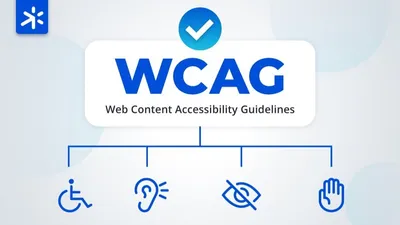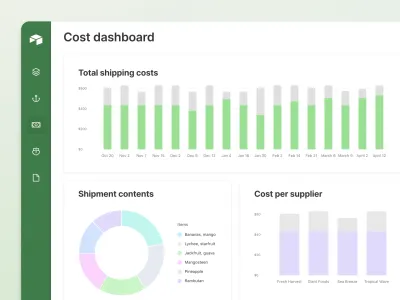· Kenny Nguyen · Developer Guide, Business Resource · 4 min read
Boosting Your Website Performance: A Simple Guide to Core Vitals and Page Speed
Learn how to improve your website's speed and user experience with practical tips for both business owners and developers.

Boosting Your Website Performance: A Simple Guide to Core Vitals and Page Speed
Is your website as fast as it could be? Google now uses page speed and user experience metrics (called Core Web Vitals) as important ranking factors. This means a faster website can rank higher in search results and provide a better experience for your visitors.
In this guide, I’ll walk you through simple yet effective steps to improve your website’s performance, whether you’re a business owner looking to understand the basics or a new web developer implementing these changes.
Why Website Speed Matters
Before diving into the technical details, let’s understand why this matters:
- Better search rankings: Google prioritizes fast-loading websites
- Reduced bounce rates: Visitors stay longer on faster sites
- Higher conversion rates: Faster sites typically convert more visitors into customers
- Improved user experience: Nobody likes waiting for slow pages to load
Step 1: Optimize Your Images and Media
Images are often the biggest culprit behind slow websites. Here’s how to fix that:
For Business Owners:
- Think of images like freight - the bigger they are, the more they cost in loading time
- Ask your web developer to implement an image optimization strategy
- Consider investing in a content delivery network (CDN) for faster global access
For Developers:
- Resize images appropriately: If an image displays at 300px width, don’t upload a 1000px wide file
- Use compression tools: Services like Compressor.io can reduce file sizes by up to 80% without noticeable quality loss
- Implement responsive images: Use the
srcsetattribute to serve different sized images based on device screen size
<img
src="small-image.jpg"
srcset="small-image.jpg 400w, large-image.jpg 1200w"
sizes="(max-width: 600px) 400px, 1200px"
width="600"
height="400"
alt="Description of image"
/>- Always specify width and height: This prevents layout shifts as the page loads
Step 2: Implement Smart Loading Techniques
For Business Owners:
- “Lazy loading” means images load only when needed, making your initial page load much faster
- Critical content (what appears first on screen) should load immediately
For Developers:
- Use the native
loading="lazy"attribute for below-the-fold images:
<img src="below-fold-image.jpg" loading="lazy" alt="Description" />- Important: Don’t lazy-load images that appear in the initial viewport
Step 3: Clean Up Unnecessary Code
For Business Owners:
- Think of your website like a car - extra weight slows it down
- Ask your developer about modern alternatives to older, heavier code libraries
For Developers:
- Consider modern alternatives to jQuery: Use vanilla JavaScript or lighter libraries
- Self-host fonts instead of loading from Google Fonts:
@font-face {
font-family: 'YourFontName';
src: url('/fonts/your-font.woff2') format('woff2');
font-weight: normal;
font-style: normal;
font-display: swap;
}- Defer non-essential JavaScript:
<script src="your-script.js" defer></script>Step 4: Use SVGs for Graphics and Icons
For Business Owners:
- SVGs are like digital artwork that looks perfect at any size without getting blurry
- They load faster and look sharper than traditional image formats
For Developers:
- Replace PNG icons with SVGs wherever possible
- Convert logos to SVG format for scalability and performance
- Optimize SVGs using tools like SVGOMG
Step 5: Measure Your Progress
For Business Owners:
- Request before/after performance reports from your developer
- Focus on real-world metrics like load time and user experience scores
For Developers:
- Use Google Lighthouse to measure performance:
- Open Chrome DevTools (F12)
- Go to the “Lighthouse” tab
- Run an analysis for both mobile and desktop
- Target these scores:
- Performance: 90+
- Accessibility: 90+
- Best Practices: 90+
- SEO: 90+
Real-World Benefits
After implementing these optimizations for clients, I’ve seen:
- Page load times drop from 6+ seconds to under 2 seconds
- Search ranking improvements of 5-10 positions for key terms
- Bounce rates decrease by up to 25%
- Mobile conversion rates increase by 15-20%
Next Steps
Improving your website’s performance is not a one-time task but an ongoing process. Start with the highest-impact items (usually image optimization) and work your way through the list.
If you’ve implemented these changes and want to take your optimization even further, consider exploring:
- Server-side caching
- Content Delivery Networks (CDNs)
- Advanced JavaScript bundling techniques
Need help implementing these changes? Feel free to reach out with questions or share your optimization results in the comments below!
Would you like a free website performance audit? Contact us today to learn how your site can benefit from these optimization techniques.



